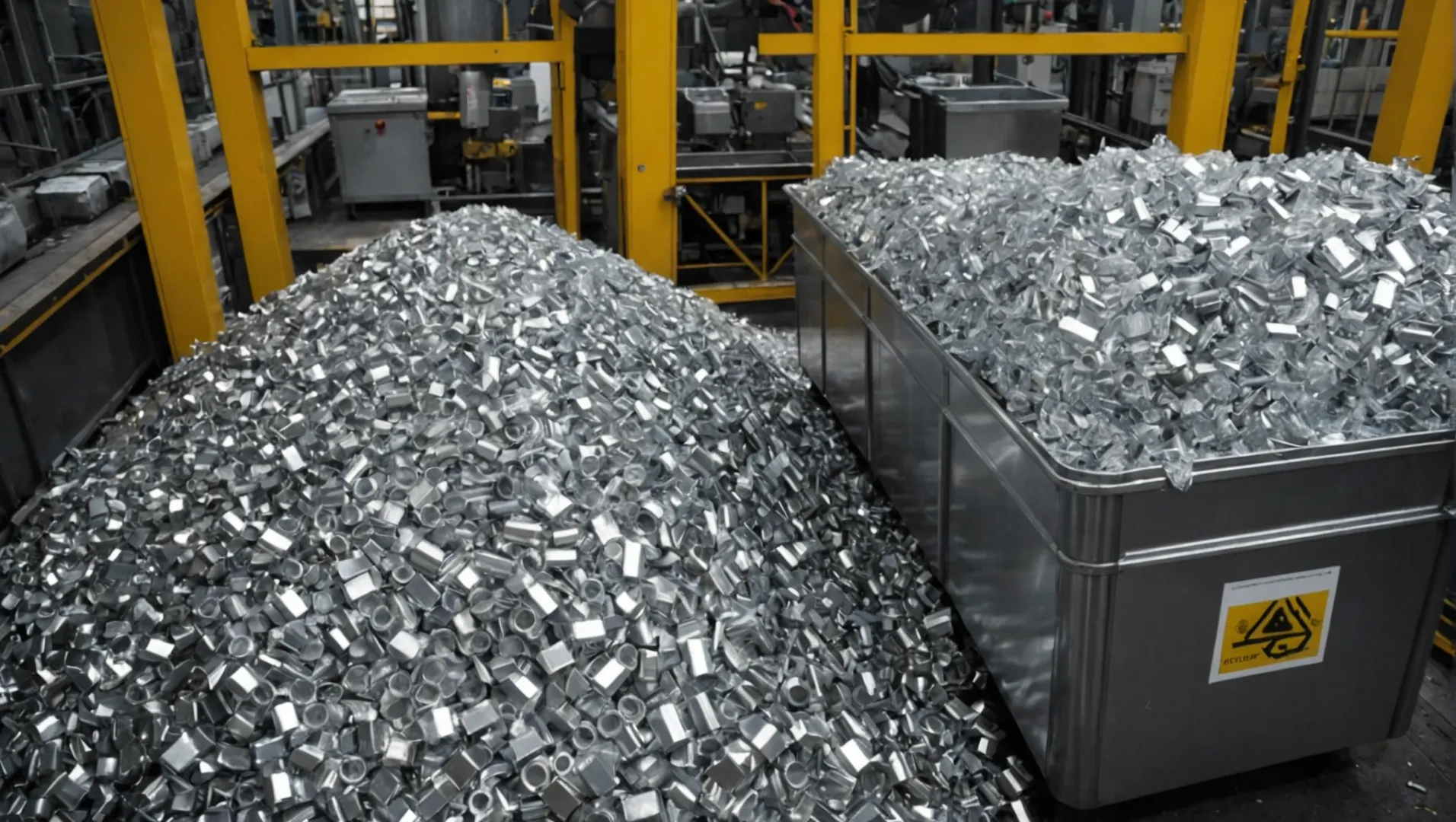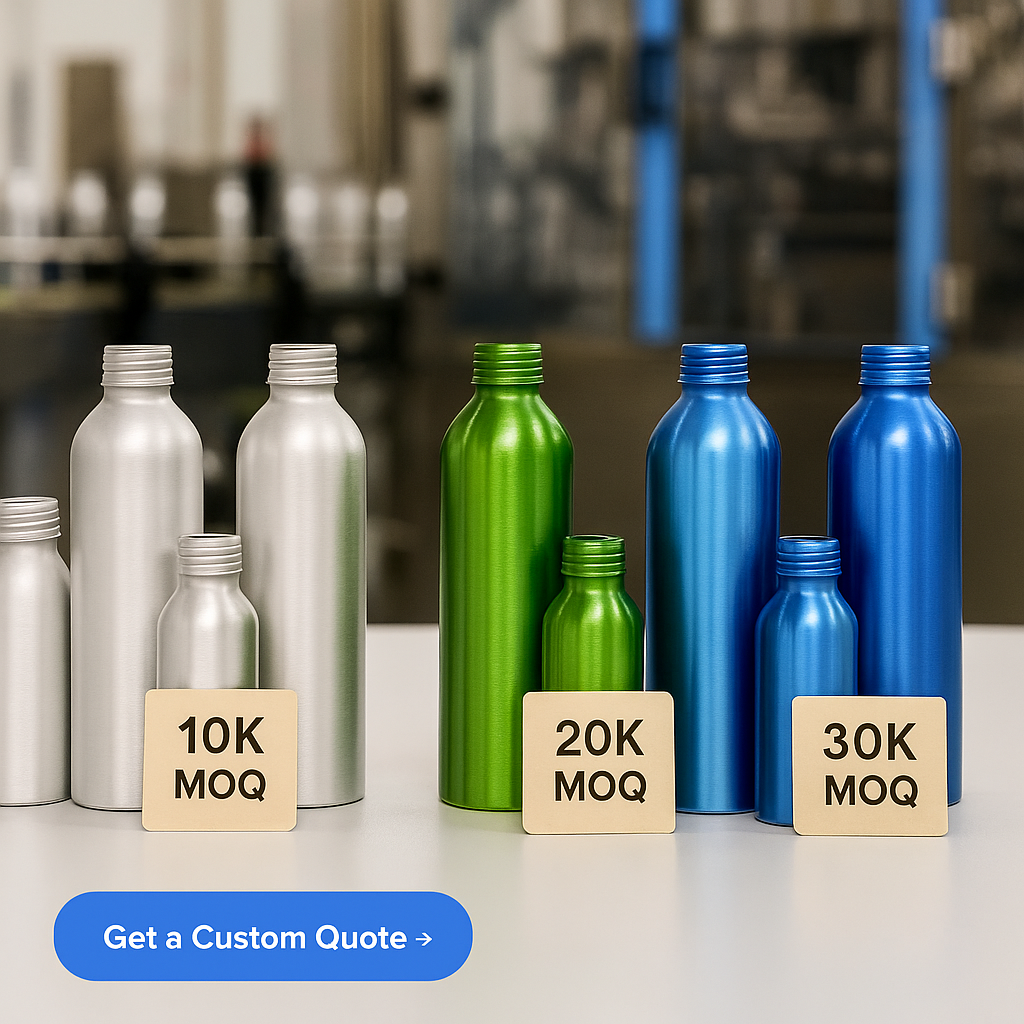
Choosing the right water bottle material can feel overwhelming, but it doesn’t have to be!
Aluminum water bottles are considered better than plastic due to their environmental sustainability, durability, and lack of harmful chemicals like BPA. Unlike plastic, aluminum can be recycled indefinitely, reducing environmental pollution and promoting a healthier lifestyle.
Let’s dive deeper into the incredible benefits of aluminum over plastic, uncovering layers of insight that can help you make the best choice for yourself and the planet.
Aluminum bottles are more durable than plastic ones.True
Aluminum resists dents and scratches, unlike plastic, which cracks easily.
What Are the Environmental Impacts of Aluminum vs. Plastic?
Understanding the environmental footprint of materials helps us make more eco-friendly choices.
Aluminum's recyclability and longevity make it a more environmentally friendly option compared to plastic. While plastic pollution persists for centuries, aluminum can be recycled multiple times without losing quality, significantly reducing environmental impact.

Comparing Production Processes
The production of aluminum and plastic involves different processes, each with its own environmental footprint. Aluminum production starts with mining bauxite, which is energy-intensive but the material's long life cycle and recyclability offset its initial impact. On the other hand, plastic production relies on petroleum, releasing significant greenhouse gases and contributing to environmental degradation.
The Recycling Difference
Aluminum can be recycled indefinitely without losing its structural integrity, making it a more sustainable choice in the long run. This continuous recycling process means less energy consumption and fewer emissions over time. In contrast, plastic recycling is limited; each cycle degrades its quality, often leading to downcycling into lower-grade products. Thus, while both materials can be recycled, aluminum's process is more efficient and environmentally sound.
| Material | Recyclability | Energy Use in Recycling | Quality Retention |
|---|---|---|---|
| Aluminum | High | Low | High |
| Plastic | Limited | Moderate to High | Low |
Impact on Ecosystems
Plastic pollution poses severe threats to ecosystems, especially marine environments. Plastic waste can persist for hundreds of years, breaking down into microplastics that infiltrate food chains and harm wildlife. Conversely, discarded aluminum may oxidize but does not break down into harmful particles. Its higher recycling rate also results in less litter in natural habitats.
Long-Term Environmental Benefits
The choice between aluminum and plastic extends beyond immediate usage. Over time, the reduced need for new aluminum production due to high recycling rates contributes positively to environmental health. This aspect is particularly significant when considering the global shift towards sustainability and reduced carbon footprints. Explore more about recycling benefits1.
Aluminum is more recyclable than plastic.True
Aluminum can be recycled indefinitely without quality loss, unlike plastic.
Plastic production is less energy-intensive than aluminum.False
Plastic relies on petroleum, releasing greenhouse gases, while aluminum's energy use is offset by recyclability.
How Does the Durability of Aluminum Compare to Plastic?
Discover why aluminum's durability surpasses plastic, offering longer-lasting, eco-friendly water bottles.
Aluminum is significantly more durable than plastic, making it a superior choice for water bottles. It resists dents and scratches, maintaining its integrity and appearance over time. Plastic, however, is prone to cracking and wear, leading to more frequent replacements and higher environmental impact.

The Material Strength of Aluminum vs. Plastic
Aluminum is renowned for its strength-to-weight ratio, which means it can withstand significant impact without easily bending or breaking. This property makes aluminum water bottles ideal for active lifestyles2, as they can endure the rigors of hiking, biking, and other outdoor activities. In contrast, plastic water bottles, especially single-use varieties, are susceptible to cracking and deformation under pressure.
Longevity and Wear Resistance
When considering the longevity of materials, aluminum takes the lead. Its resistance to rust and corrosion makes it a long-lasting option for consumers who prefer a one-time investment in a water bottle. Plastic, although lightweight, can degrade over time when exposed to heat and UV radiation, leading to potential leaching of harmful chemicals into the water.
| Durability Comparison Table | Feature | Aluminum | Plastic |
|---|---|---|---|
| Impact Resistance | High | Low | |
| Scratch Resistance | Moderate to High | Low | |
| Temperature Tolerance | Excellent | Poor | |
| Lifespan | Long-lasting | Shorter lifespan |
Environmental Impact of Material Durability
The durability of a material directly affects its environmental footprint. Since aluminum water bottles last longer, they reduce the frequency of replacements, thereby minimizing waste production. This durability aligns with eco-friendly practices by lowering the demand for new resources. On the other hand, plastic bottles often require frequent replacements due to their less durable nature, contributing to more landfill waste and higher production demands.
Cost Implications of Durability
Though the upfront cost of aluminum water bottles might be higher than their plastic counterparts, their durability ensures that they are a cost-effective choice in the long run. Consumers save money by avoiding frequent purchases of new bottles and benefit from reduced environmental impact, making aluminum a wise investment.
Aluminum bottles resist dents better than plastic.True
Aluminum's strength-to-weight ratio helps it withstand impacts.
Plastic bottles have a longer lifespan than aluminum.False
Plastic degrades faster, especially under heat and UV exposure.
Are There Health Risks Associated with Plastic Water Bottles?
Plastic water bottles are convenient, but do they pose hidden health risks?
Yes, plastic water bottles can pose health risks due to chemicals like BPA and phthalates that may leach into the water, particularly when exposed to heat. These chemicals have been linked to various health issues, including hormonal disruptions and increased cancer risk.

Understanding BPA and Phthalates
Bisphenol A (BPA) and phthalates are common chemicals used in the manufacturing of many plastic products, including water bottles. These compounds can leach into water, especially when bottles are exposed to heat or sunlight. Studies have shown that BPA is an endocrine disruptor that can mimic estrogen, potentially leading to hormonal imbalances.
Health Implications of Chemical Exposure
Exposure to BPA and phthalates has been associated with several health concerns. For instance, research suggests a correlation between these chemicals and reproductive disorders, metabolic issues, and an increased risk of certain cancers. Furthermore, studies indicate that children and pregnant women might be more vulnerable to these effects.
Heat and Reuse: The Double-Edged Sword
Reusing plastic water bottles might seem like a good idea for the environment, but it can exacerbate health risks. Over time, repeated use and exposure to heat can increase the breakdown of plastic, leading to greater chemical leaching. A study on leaching effects3 showed significant levels of BPA in water stored in reused plastic bottles left in hot environments.
Alternatives to Consider
To mitigate these risks, switching to non-plastic alternatives like aluminum or stainless steel water bottles is recommended. These materials do not contain harmful chemicals and are more resistant to environmental factors that cause leaching in plastics. Additionally, they are more sustainable4 as they can be recycled without losing quality.
By understanding the potential health risks associated with plastic water bottles, consumers can make informed choices that benefit both their health and the environment.
BPA leaches into water from plastic bottles.True
BPA can leach into water, especially when exposed to heat.
Aluminum bottles are less sustainable than plastic.False
Aluminum is more sustainable as it can be recycled efficiently.
Why Is Recycling Aluminum More Effective than Recycling Plastic?
Recycling aluminum is more efficient and environmentally friendly compared to recycling plastic, offering numerous advantages.
Recycling aluminum is more effective than recycling plastic due to its closed-loop recycling process, lower energy requirements, and minimal quality degradation over multiple cycles.

The Energy Efficiency of Recycling Aluminum vs. Plastic
Recycling aluminum requires only about 5% of the energy needed to produce new aluminum from raw ore. In contrast, recycling plastic is less energy-efficient because plastics must be sorted by type and color before reprocessing, which is energy-intensive. Additionally, the process of recycling plastics5 often involves melting them down, which releases greenhouse gases.
Closed-Loop Recycling Benefits
Aluminum can be recycled indefinitely without losing quality. This closed-loop process allows aluminum products to return to store shelves as new products quickly. Plastic recycling, on the other hand, often leads to "downcycling," where the recycled product is of lower quality and can only be reused a limited number of times.
Economic and Environmental Impact
The economic incentives for recycling aluminum are stronger because of the metal's higher scrap value. This encourages more extensive collection and recycling efforts compared to plastics, which often end up in landfills due to their lower economic value.
The environmental benefits of recycling aluminum include reducing the need for mining bauxite ore, thus preserving natural landscapes and decreasing habitat destruction. In contrast, recycling plastic can still result in microplastics that negatively impact marine life when not properly managed.
Comparison Table: Aluminum vs. Plastic Recycling
| Aspect | Aluminum | Plastic |
|---|---|---|
| Energy Requirement | Low (5% of initial production) | High (sorting and processing) |
| Quality Retention | No degradation, fully recyclable | Downcycled to lower-quality items |
| Economic Value | High scrap value | Low scrap value |
| Environmental Impact | Reduced mining and pollution | Potential microplastic pollution |
Recycling aluminum uses 5% of the energy of new production.True
Aluminum recycling requires significantly less energy than producing from ore.
Plastic recycling retains the same quality as new plastic.False
Plastic often undergoes downcycling, resulting in lower-quality products.
Conclusion
Opting for aluminum over plastic is a win-win for your health and the environment. Consider making the switch for a sustainable hydration solution.
CPI is a leading aluminum water bottle supplier in China over 10 years, welcome to contact with us if you are looking for aluminum water bottle or any other aluminum packaging.
-
Learn how recycling aluminum outperforms plastic in sustainability.: Increasing aluminum recycling translates to less energy used and a lower carbon impact. In the aluminum beverage can market, for example, each percentage ... ↩
-
Explore why aluminum suits outdoor enthusiasts perfectly.: Aluminium is lighter but not as strong, its strength to weight ratio is better than for stainless steel. Stainless steel is also cheaper which may be a factor ... ↩
-
Learn about how heat affects chemical leaching in reused bottles.: The objective of this study was to independently assess whether BPA contamination of water was occurring from different types of reusable drinking bottles. ↩
-
Discover why aluminum is a more sustainable choice.: Aluminum beverages contain 3X to 20X more recycled content than glass or PET bottles; Aluminum beverage containers are valued at $991 per ton ... ↩
-
Explore the complexities and challenges of recycling plastic effectively.: Recycling often saves energy because the products being recycled usually require much less processing to turn them into usable materials. ↩






